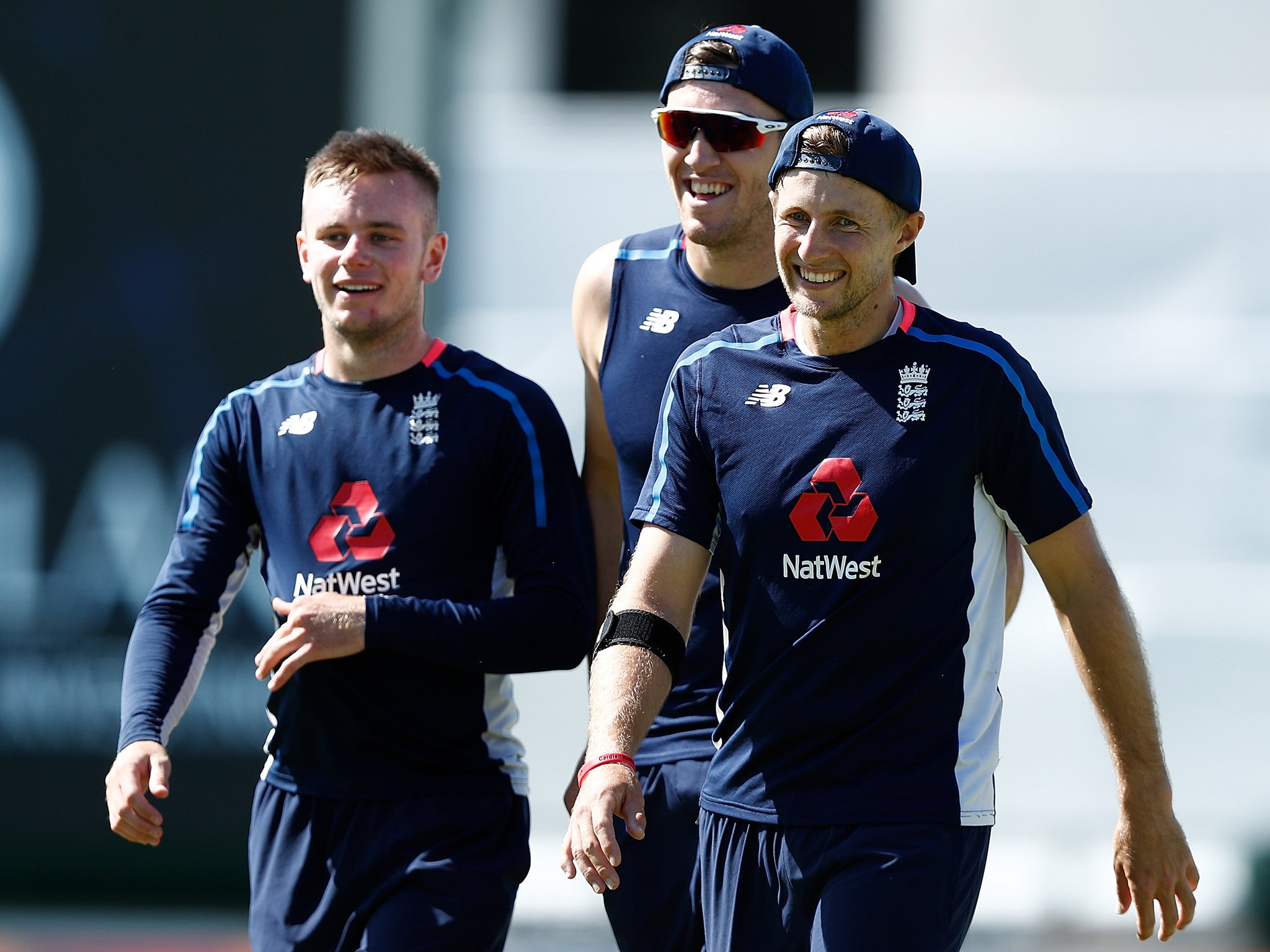Mason Crane hoping to be the solution to England's all-too familiar problem
The 20-year-old is the latest potential solution to an issue that has been vexing England ever since the sudden retirement of Graeme Swann four years ago

Steve Smith saved his cruellest sledge of the Ashes series for the Perth Test. After the pivotal third day, on which he had battered England’s bowlers for an unbeaten double century, Smith cast his acerbic eye over the tourists' spin attack. “I thought Dawid Malan was probably the pick of the spinners, to be honest with you,” he said. “He bowled really nicely there. He was hard to get away.”
Smith could hardly have been more scathing of Moeen Ali had he mentioned him by name. Still, he almost had a point. Malan, the third spinner used in the innings, gave the ball a decent rip. Joe Root, the second, was tidy enough. Moeen, meanwhile, England’s premier spinner, bowled 33 largely innocuous overs for just the wicket of Shaun Marsh.
And so, here we are again: another Ashes lost, another existential freak-out about the state of English spin bowling. As the series moves on to the Boxing Day Test at Melbourne, and thereafter to Sydney, 20-year-old Hampshire leg-spinner Mason Crane appears to be coming under consideration for a Test debut, the latest potential solution to a problem that has been vexing England ever since the sudden retirement of Graeme Swann four years ago. Teams very rarely win in Australia without express pace or world-class spin. England have neither.
Moeen is still highly rated, and his place is not under immediate threat, but as this series has gone on, it is becoming increasingly clear that on unhelpful pitches, he is capable neither of taking regular wickets nor tying up an end. Injuries - a side strain on arrival and a gashed finger during the first Test at Brisbane - have hampered his progress. But you sense at some point, England may at least have to explore alternative options.
The first point to make is that this is not exactly a new problem. Indeed, if you take the period since the retirement of Derek Underwood in 1982, England have probably not had a world-class spinner for around 30 of those 35 years, taking into account the five or six-year period when Swann and Monty Panesar were at their peak.
Since which time, the roll-call of auditionees has at times resembled Australia’s desperate search for a post-Warne magician. As well as Moeen, Scott Borthwick, James Tredwell, Adil Rashid, Samit Patel, Zafar Ansari, Gareth Batty and Liam Dawson have all been tried and jettisoned at various points. Rashid, the most promising of the lot, seems to have been binned for good in red-ball cricket, for reasons escaping understanding.
But in a way, this is an issue that goes beyond individuals, and right to the heart of the English system. Why, despite lavish funding and decades of trying, has English cricket simply been unable to produce Test-class spinners on a regular basis? Why does England’s so-called best spinner have a first-class average of 41? And why was Crane, this country’s most promising leg-spinning talent since Rashid, playing second XI cricket for Hampshire as recently as this season?

The usual gripe is county pitches, which is only partially true. The abolition of the mandatory toss in the County Championship in 2016 has contributed to a general improvement in the quality of surfaces across the board, with teams having to work harder for wins and fewer of the rank greentops on which medium pacers have traditionally thrived.
Instead Crane, a kid with a wise head on his young shoulders, puts the issue mainly down to scheduling. With the England and Wales Cricket Board keen to stage as much lucrative Twenty20 as possible during the school holidays, four-day games are loaded towards the front and back of the season. The upshot is that Hampshire, like most counties, played just a single four-day game in each of July and August this season, when pitches are theoretically at their driest and best.
“It’s tough at the moment,” Crane says. “Half the games are in either September or April. Even if you get a wicket where you think you might be playing, the weather would suggest otherwise. If it’s going to be a two-and-a-half day game because of the rain, you probably want an extra seamer or batter.

“A lot of our games are at the start and end of the season. In September, for example, they start the games a bit earlier, there’s still some dew around, so it’s difficult to play another spinner. We play a lot of white-ball cricket during the height of summer.”
The good news is that Crane believes there is talent in the pipeline. Dom Bess, the Somerset off-spinner, is of a similar age to Crane. His team-mate Jack Leach, a slow left-armer, was agonisingly close to earning a place in the Ashes squad. Matt Parkinson at Lancashire is a highly-rated leg-spinner and there are also great expectations for Hamidullah Qadri, the Kandahar-born Derbyshire off-spinner who became the first county cricketer to be born in the 21st century.
“There are exciting spinners around,” Crane said. “I think we’re all reasonably similar ages as well. A lot of people say there are no spin bowlers. But they’re out there. They just need the time to play.”
And here, ultimately, is the nub of the problem. Young spinners need time, overs, a certain indulgence. Many have ended up either spat out of the county game (Mike Munday, Maurice Holmes), stagnating through lack of opportunities (Josh Poysden, Ravi Patel) or forced to develop their batting or focus on white-ball cricket (Matt Critchley, Danny Briggs).

It takes character and courage, as well as line and length, to keep plugging away when the odds are stacked against you. “One of the big things I’ve learned is that you’re going to be hit for six,” Crane says. “It’s going to happen. Some spinners, when they are hit over the rope a couple of times, definitely get the urge to bowl a few dot balls.
“It’s just realising that you’re two inches from the edge of the bat every time. So if one bounces a bit more, it can be out. I don’t mind going for runs. Trying to take wickets is my job.”
Crane also suggests trialling the Kookaburra ball in English cricket, in the same way that the red Duke has been introduced into Sheffield Shield cricket in Australia. “The Kookaburra, I reckon you can bowl with straightaway, new out of the packet,” he says. “Dukes are a bit slimier when they’re new.”
Having made his England debut during the summer, in the T20 series against South Africa, Crane has already had a taste of international cricket. AB de Villiers went after him, and after asking captain Jos Buttler where he should bowl (“I dunno!” Crane remembers Buttler replying), Crane held his nerve and got De Villiers out at deep square leg. The England management like his mettle.
Does the prospect of making a Test debut at the MCG in front of a baying crowd of 90,000 not intimidate him? “I’ll just try and enjoy it like I enjoy every game,” Crane says. “You spend your life growing up wanting to play for England. I’m not going to let a few shouting Aussies getting in the way of it.”
It is the sort of fearless attitude that has got Crane this far. It will stand him in good stead if he ever wants to go further.
Join our commenting forum
Join thought-provoking conversations, follow other Independent readers and see their replies
Comments
Bookmark popover
Removed from bookmarks